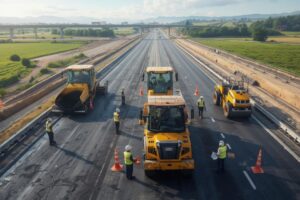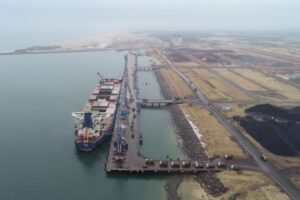Geotechnical Decisions That Shape Railway Outcomes
Home » Geotechnical Decisions That Shape Railway Outcomes
Author: Himangi Ahuja
Designation: Sales and Marketing - Advisor
Date: July 17, 2025
Building Railways from the Ground Down
Railways are only as strong as the ground they rest upon. Railways may look like surface level systems, but their reliability and performance are deeply tied to what lies beneath. Geotechnical engineering provides the foundation, literally and technically, for everything that follows. It provides the essential ground knowledge needed to plan, design, and build safe and durable rail infrastructure.
Before any tracks are laid, geotechnical engineers conduct detailed investigations including drilling boreholes, sampling soil, and running geophysical tests with tools like rotary rigs and ground-penetrating radar.
These steps relate to several key factors: soil strength, bearing capacity, settlement risk, water table levels, and potential contamination. And this data forms the basis for design decisions around foundations, subgrade layers, and track materials, essentially every design decision that follows.
Engineers assess bearing capacity, classify soils, evaluate groundwater conditions, and determine potential settlement risks. They uncover the details that inform not only whether a site is viable, but how it must be approached to ensure long-term safety and performance. It truly goes beyond just supporting structures.
Slopes, Soils, and Smart Solutions
Rail routes rarely follow easy ground. When crossing hilly, soft, or unstable terrain, geotechnical engineers design embankments, assess slope stability, and recommend reinforcement methods like retaining walls or soil strengthening.
They also plan for proper drainage. Poor water management leads to track instability, especially in areas with high rainfall or clay-heavy soils. Subsurface drainage systems, geosynthetics, and engineered layers help maintain a stable subgrade and prevent long-term issues like heave or settlement.
Where soils are particularly problematic, such as expansive clays or zones with seismic risk, engineers propose ground improvement techniques. Depending on site conditions, these could include stone columns, vertical drains, or dynamic compaction. The focus is always on safety, performance, and cost-effectiveness.
For complex infrastructure like tunnels, bridges, and ROBs (railway over-bridges), geotechnical engineering becomes even more indispensable. These structures demand precision, every soil-structure interaction must be understood to prevent failure and ensure safety.
It Doesn’t End at Construction
Even after the rails are laid and the trains start running, the role of geotechnical engineering continues and continues long after the tracks are operational. Engineers often install monitoring systems to track ground movement and detect settlement over time. This data supports proactive maintenance and helps avoid costly interventions later.
For bridges, tunnels, and elevated sections, ground analysis is critical. Foundation designs depend on understanding both soil and rock behaviour. Without this input, structures face greater risk and potential overdesign or underperformance.
While often behind the scenes, geotechnical engineering is integral to the success of railway projects. It’s not just about identifying soil types or mapping rock strata, it’s about delivering the intelligence that ensures our rail systems are safe, stable, and built to last. It ensures that infrastructure is designed with a clear understanding of ground behaviour and built with long-term performance in mind. As rail projects face growing pressure around cost, risk, and sustainability, early geotechnical input is not just a technical requirement. It is a critical driver of project certainty and success.
Recent Blogs
News Bulletin: December 2025 – Edition 2

The Highways Series: Changes in the Regulatory Rulebook
News Bulletin: December 2025 – Edition 1
News Bulletin: November 2025 – Edition 2

Diwali Celebrations at the Eka Infra New Office!

The Highways Series: The Financial Models Behind the Roads We Drive
News Bulletin: November 2025 – Edition 1
News Bulletin: October 2025 – Edition 2

Roads That Last
